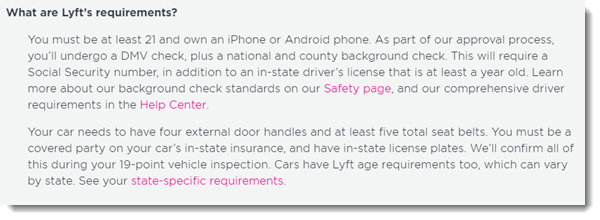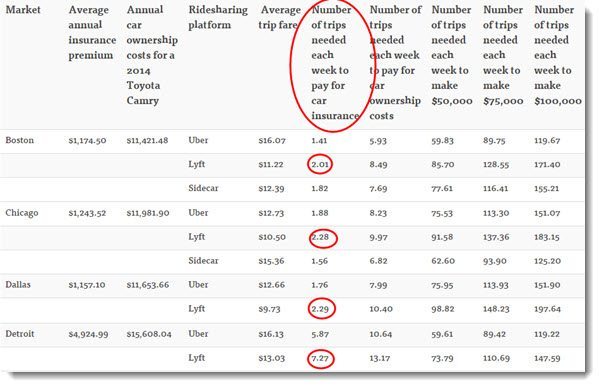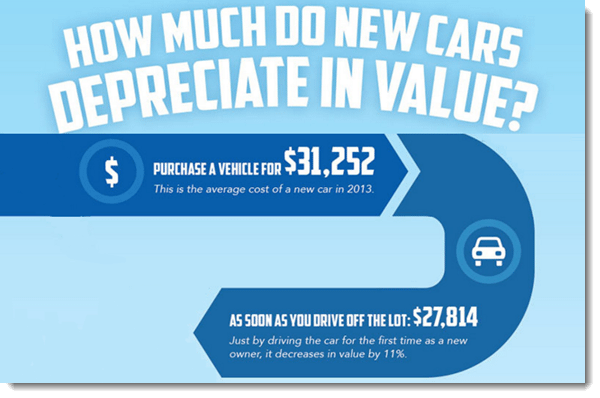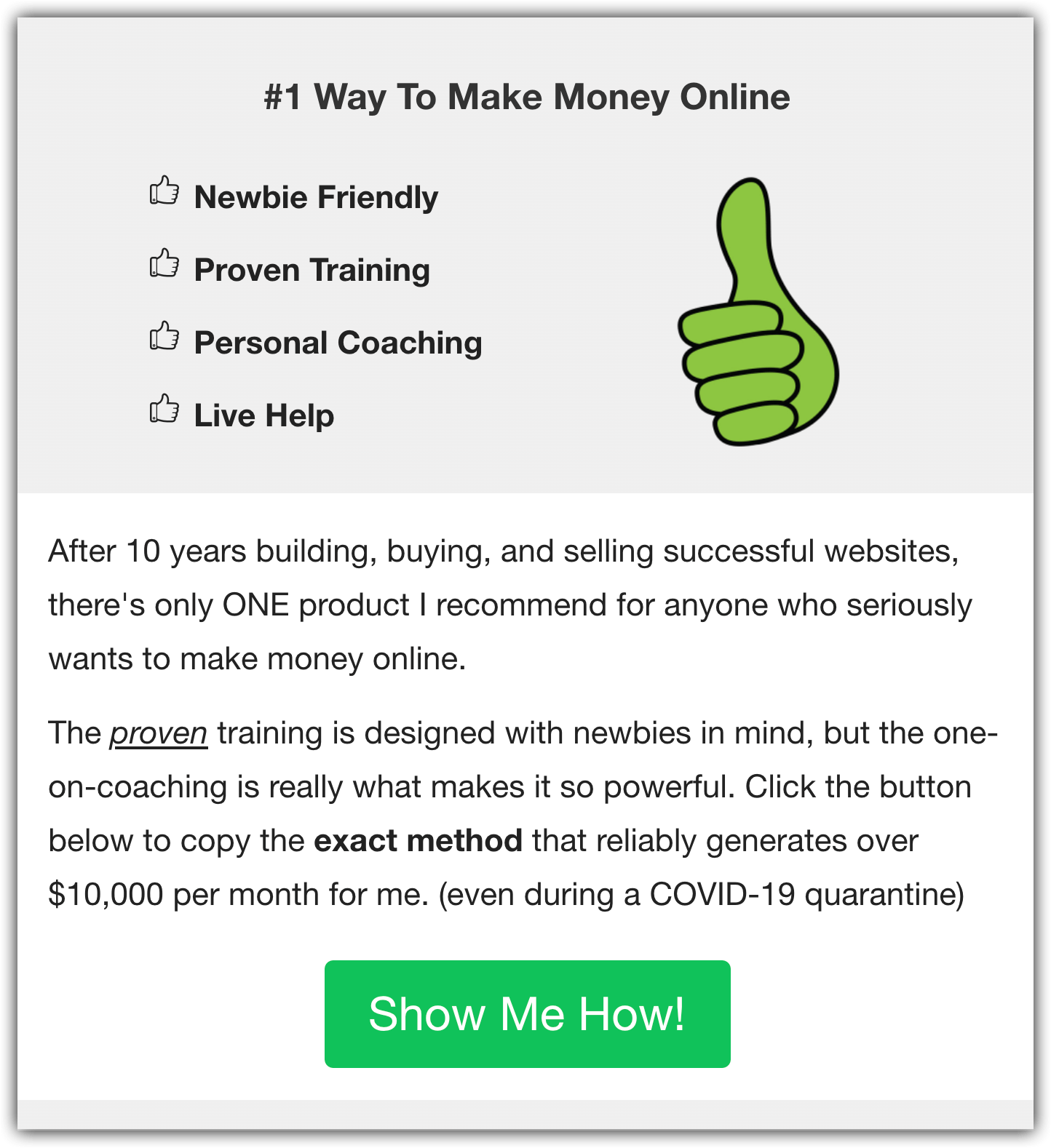
Ridesharing has created a lot of buzz these last few years. Ever since Uber came on the scene and disrupted the transportation market — by basically crushing taxi companies in every city they entered — other rideshare companies have popped up hoping to take advantage of that.

Are You Ready To Work Your Ass Off to Earn Your Lifestyle?
Are you tired of the daily grind? With a laptop and an internet connection I built a small website to generate income, and my life completely changed. Let me show you exactly how I’ve been doing it for more than 13 years.
Lyft is one of those companies.
But I’m not here to talk to you about why or how ridesharing is taking over. I’m here to find out if there is any money in it for people you and I.
Can you really make money driving for Lyft? Let’s find out.
Making Money Driving For Lyft
Lyft has been around since 2012, and according to Bloomberg news, they have more than 100,000 drivers across the country.
Going on their fourth year, with that many drivers, I think it’s safe to say you can make money there. I doubt all those drivers would continue to work for free but let’s look a little deeper.
According to Ryder Pearce, founder of SherpaShare (a financial dashboard for rideshare drivers), and a Lyft driver himself, Lyft drivers earn an average of about $25 to $35 per hour.
Not bad.
Lyft claims that drivers can make $35/hour driving for them. If you go to their website and click the “Drive with us” button you are taken to a page where this claim is made boldly.
They even have a handy-dandy calculator you can use to try and figure out your own earnings based on your city and how many hours you want to drive.
I tried out the calculator and got back an amount that was equal to about $20 per hour. Still not bad.
Here’s a screenshot from one Lyft driver who made more than $1,500 with Lyft in one week.

If you look at the hours, you will see this driver worked about seventy hours to make that money.
That works out to be about $21 per hour. It’s below the average, but not a bad hourly rate.
So, there you have it. It is definitely possible to make money driving for Lyft.
We have industry reports, claims from Lyft themselves, and a little proof from one of their drivers.
What’s it Take to Be a Lyft Driver?
Lyft is surprisingly lenient on driver and vehicle requirements, especially when compared to its competitor, Uber.
Uber has an extensive list of vehicle requirements and multiple categories. Lyft’s are much simpler.
Here’s what Lyft says is required of all drivers and vehicles.

As you can see, this is all pretty standard stuff. Pass a background and DMV check, own a four-door, and have insurance. Seems simple enough.
You also have to make sure your vehicle is in good condition. Things like your horn and all your lights need to be working, as well as maintaining good tread on the tires.
In most cities, your vehicle needs to be a 2005 or newer. However, this requirement varies from state to state, so you will have to check your state to be sure.
Expenses and Other Factors
Now that you have seen the requirements and proof that income is possible, you might be ready to jump in and drive for Lyft. Before you do, let’s take a deeper look at what it’s really like to be a Lyft driver.
What Do Averages Really Mean?
We already know that the national average income for a Lyft driver is somewhere between $20 per hour and $35 per hour. That’s not bad, but those are the averages for the entire country.
If you are trying to calculate your own potential earnings there are some other important factors to consider besides the nationwide averages.
Lyft hires drivers in more than two hundred cities. So, while drivers in cities like New York and LA might earn closer to the maximum hourly rate ($35) drivers in cities like Sanford Florida and Plano Texas earn much less no doubt.
What is important to note here is that these averages are based on drive time — that means, time spent behind the wheel with a fare. If this included the total time it would be much less.
The Trouble with Downtime
One of the things rideshare drivers (no matter what company) complain about most is downtime.
You might be on duty for eight hours, but you won’t be driving customers around the whole time.
In fact, drivers experience so much downtime that RideShareGuy.com suggests furthering your education or starting a business while you wait for fares. That seems like an awful lot of downtime.
All this time spent waiting around is what drives down the earnings for drivers, especially drivers in smaller cities. But it’s not just small cities. This is also a problem for drivers in cities where Lyft has just been introduced because people don’t know about it yet.
Taxi drivers report fare time vs total time to be around 50%. That means, if they work eight hours, only four of them are actually driving customers around. For Lyft drivers, fare times are about 32%.
So while the hourly rate for Lyft drivers is much higher when a fare is in the car, they are 18% less likely to have a fare.
Most Lyft drivers drive for Uber too. Think Uber is better? Check out my analysis of whether or not you can make money with Uber. They try to minimize their downtime by moonlighting with both companies.
More companies are popping up as well, so you could sign up for a few and keep yourself busy. You could even start doing AirBnB and rent out a room in your house or a couch in your living room to take full advantage of the sharing economy!
Paying For Insurance
Insurance is one of the biggest and most important expenses you will have as a Lyft driver. This is a requirement and one you shouldn’t skimp on.
The cost of insurance will vary state to state, but thanks to NerdWallet.com we can see a breakdown specifically for Lyft drivers.

NerdWallet says that Lyft drivers need at least two rides per week in order to cover insurance costs. Now that is based on an average, but remember these averages can be tricky. For example, a driver in Detroit will need at least six rides to cover insurance.
The Cost of Fuel
Although we’ve covered what insurance might cost you, we still don’t know about some of the many other expenses. Fuel is one of them — and it’s a major expense.
I don’t have to tell you how that the cost of fuel is outrageous and it doesn’t look like it will be going down any time soon.
This expense — probably more than all the rest — is the one that can destroy your profits and make Lyft driving a futile effort in some ways.
You can cut down of fuel in a number of ways, but sometimes you are stuck with what ya’ got. If you drive an SUV, it’s not likely that you are going to downgrade to a smaller car just to drive for Lyft.
The average Lyft trip is about five miles. Most standard sized cars get about twenty to thirty miles to the gallon. So after four trips, you have used a gallon of gas, assuming there wasn’t a lot of traffic, wind, or luggage.
Basically, to pay for your fuel, one in four rides will be free. Well, not “free” but it will go towards your fuel.
Wear and Tear on Your Vehicle
Vehicle wear and tear is one of those things that we just can’t estimate. Some vehicles handle in town driving better than others. Some vehicles are simply better built. Some vehicles should not be on the road at all.

I can tell you this though: as soon as a brand new car is bought and touches the pavement outside of the car lot, it has already lost 11% of its value.
That should give you some idea of what the car industry thinks about wear and tear. And that’s a new car! Imagine a used car with a hundred thousand miles on it, being driven daily, in town.
Wear and Tear are what lead to breakdowns.
- Too many trips on that old set of tires?
- Running cheap fuel for too long?
- Ever replaced those old headlights?
All these things can lead to major damage, more downtime, and unhappy riders. That is why regular maintenance is important to keep in mind, especially when driving for Lyft.
That’s going to cost you. Even if you earn $1,000 driving, one large repair could wipe out those earnings.
Writing Off Repairs And Miles At Tax Time
The details are a bit boring, but you can write off a lot of your expenses when tax time rolls around. Depending on how much income you make, this could be very beneficial to you, or not much at all. According to Hurdlr, you can write off a ton of things related to your car, including insurance, gas, car washes, maintenance, license/title/registration, and whatever other related expenses there are.
That sounds great! But it’s not like you’re “making” more money. You’re just reducing the amount that the IRS can take from you. They’re still taking money from your earnings.
PLUS, if you make over $400, you’ll be subject to a self-employment tax. And now your taxes are more complicated, so if you aren’t paying someone to do it, you’ve got to figure out these calculations yourself.
Or pay someone to do your taxes, which is going to cost you more at tax time. You can probably figure it out yourself, but remember you can’t write off your whole car payment. There’s a calculation you have to make to get the right number.
Then, at the end of the day, you’re still putting wear and tear on your car, which is going to cost you in the long run. As a full-on business, you’re going to struggle to make a full-time income in the long run.
Final Verdict On Making Money Driving For Lyft?
As a short term solution to make extra cash, or make money between jobs, driving for Lyft is great. As a long term solution for consistent income, I wouldn’t recommend it. In fact, I’m not the only one.
Personally, I think the big money is not driving for Lyft, but in recruiting drivers and passengers. There are many opportunities to help Lyft grow their business, and they’ll pay you to do it. Just through the app with a referral code, you can get paid to refer new drivers or passengers.
A couple of the websites mentioned in this post are doing just that. The Ride Share Guy and Ryder Pearce, from SherpaShare, are both, drivers and recruiters. Looking at their websites I’d say they spend more time recruiting than driving, as they each have hundreds of blog posts, podcasts, and even videos.
What they are doing is called affiliate marketing, which the same thing I do, but my websites are on a different topic.
It’s a highly profitable business model, where you start a website on a topic, then refer people to products and services related to the topic of your website.
For example, related to ridesharing, drivers need all kinds of things: insurance, fuel, and maintenance items, like tires and other parts. Other things like GPS devices, music subscriptions, and even health-related items would also count.
If you started a website about ridesharing, you could potentially sell an ebook about how to stay in shape after sitting in your car all day, or what type of diet you can have to maintain energy throughout the day and not gain weight.
As an affiliate, you could earn a percentage each time visitors to your site buy something you promote or recommend. And the best part is, there is an affiliate program for most things you can buy online!
Your website can be on any topic though – computers, health, travel, family – any topic works because people buy so much online.
You can learn how to start your first affiliate website at the same training center I did. That links to a review, and yes, there’s a referral code in the review so I get paid for each referral I get them.
[optin-monster-shortcode id=”rtjxgxw5prb15mcq9s7n”]
Even if you still want to make money driving for Lyft, you can consider working on your affiliate site in your spare time. Waiting at Starbucks for an hour scrolling through Twitter or watching a movie isn’t very productive.
Imagine if you used that same time to build an online business. Even just a few hours per day can help you make major headway into earning reliable online income. It took me about 6 months to start earning money with my website, and I was able to quit my job after 18 months.
Two years may seem like a long time, but those two years of work have resulted in me working from home for a total of 4+ years now. It was worth every minute!
The cool thing about online business is that there’s no “pressure” to go fast. You can work on your site Monday-Friday, then take weekends off, and your website will be ready for you on Monday! It’s not like a brick and mortar business where you have to pay rent or hire employees. It’s cheap to run, simple to learn, and fun because you can write about topics that interest you!
Got any questions? Leave a message below?
Have you been driving for Lyft? What was your experience so far?
==> Sign Up To Lyft And Start Driving!
Make Money Driving for Lyft
Newbie Friendly
Cheap To Start
Easy To Scale
Income Potential
Final Review
There are thousands of different side hustles you could do to earn some extra money on the side, and which one "clicks" for you depends on your personality and goals. However, there's one side hustle that makes an insane amount of money and works for anyone.
Starting an affiliate website is an incredible way to earn extra money because you can do it from your home on a laptop, and work on your business in the evenings and on weekends. The income potential is huge, and it's easy to scale

Nathaniell
What's up ladies and dudes! Great to finally meet you, and I hope you enjoyed this post. My name is Nathaniell and I'm the owner of One More Cup of Coffee. I started my first online business in 2010 promoting computer software and now I help newbies start their own businesses. Sign up for my #1 recommended training course and learn how to start your business for FREE!



 Can You Really Make Money Texting People?
Can You Really Make Money Texting People?


Daniel
It seems that there are pros and cons to driving for lyft and I think it’s really down to the individual as to what works for them. Yes I think the earning potential is there and like most things in life, you have to work hard for your money. If you are a driver for lyft (or uber) is this considered to be employed or self employed. And if the two companies uber and lyft are rivals, are there not restrictions on working for both companies at the same time. Would this not be seen as a conflict of interest.
Mark
You are an contractor and as such the company has no real say in what you do or when you work. So yes, you can drive for both at the same time and technically the companies can not prohibit you. You can sell products out of the back of you car if you want to and you have the right to only accept the rides you want to take, no matter how much they encourage a 90% acceptance rate. I’ve heard of users becoming deactivated for having a rating below 4.6 on either platform and honestly based on what I’ve been told a “independent contractor” is required to do, this may not be legal at all. If you’re a smoker for example and you stink up your car you will get low ratings (maybe you want to sell yourself as a “smoking allowed driver”) but you’re an “independent contractor” so technically you should be able to run your business as you want to… There’s a lot of legal gray areas both Uber and Lyft tread on and eventually they may need to classify their drivers as employees or they may face legal troubles. Being an Independent Contractor means you have rights that you don’t when you’re an employee but you also give up so much such as health benefits.
Bassam
Lyft does seem to be a place you can make money in, obviously if someone is considering Lyft they got to consider all of the out of pocket costs that they’d have to deal with. My question for you is how far back does Lyft look at as far as your driving record is concerned? I know Uber is very uptight with driving records and they go back as far as seven years I believe, do you know how far back does Lyft look at?
Richard U.
First of all, i have not heard much about Lyft other than Uber may be its because of my demography but this is quite another detailed review Nathaniell.
Just like everything you touch, this yet another one of those reviews people will be graving to read before taking the next step.
If i am to go for this kind of business this a lot of good information and with such details i will know exactly what to expect.
quick question though. What you will be the best option, to get a car as higher purchase or to buy one with outright ownership?
Nathaniell
Which car you get depends on your own financial means. If you are getting one specifically do drive lyft, getting a new one with good gas mileage could help you save money. But buying a used one outright would mean that all your money goes to profit, instead of paying for a car payment!
Jim
I come from a small town in Arkansas so I didn’t know very much about Lyft. I learned a lot from your article. I’ve heard of services such as Lyft and Uber but, I’ve always been skeptical about using a service like these for safety reasons. Reading your article has helped lift some of the worries I had. I think I would be more receptive to using a Lyft driver the next time I am in a location that offers the service. Very informative article. Thank you and best of luck with your online endeavors.
Nathaniell
Lyft took quite a while to get to my city as well, but I was glad when they did! I was so jealous. I went on a motorcycle trip a few years back and discovered that lyft was a great way to get around town while I was doing pub crawls (I didn’t want to ride my motorcycle). But when I got back, it wasn’t available!
Now it is, but there are still some neighboring cities that do not have it. If you get stuck somewhere at night and can’t drive, you have to wait 30 minutes sometimes to get a Lyft!
larry
the idea that you can make anything close to decent money driving for Lyft or Uber is completely bogus. this is propaganda from the rideshare companies and their operatives. in fact, just a look at their pay scale and some simple math makes this obvious. all of the hype, all of the “promotions,” all of the claims– it is ALL LIES. ALL OF IT. the truth is, Lyft and Uber drivers make somewhere between $3 and $10 per hour. that’s after commission, taxes, gas, and vehicle depreciation.
Nathaniell
Well, vehicle depreciation is a grossly undercalculated cost of driving for these companies, but I have talked to quite a few drivers of these companies and many people seem quite content to drive in the evening and on weekends for extra cash. Straddling both seems to be a good way to bump up earnings and keep yourself busy, but again, it increases wear and tear on the car.
Then, if you drive something electric, replacing batters is going to be super expensive over time! I guess it’s a tax writeoff though, and you can use that to set off any earnings.